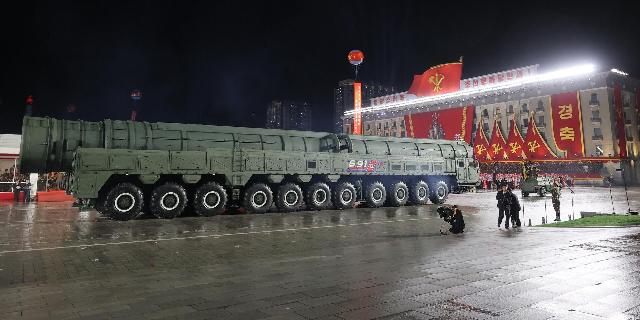MWM: the DPRK army has tested a new hypersonic missile Hwasong-11mA
The DPRK army has tested a new Hwasong-11mA missile, writes MWM. It is considered an extremely serious weapon that is almost impossible to track, and its characteristics are close to Iskander. The military buildup of Russia's ally cannot but worry NATO countries, the author notes.
The Korean People's Army tested a new class of tactical ballistic missiles on October 22. They are distinguished from the previous generation by a stage with a hypersonic gliding unit: for an Asian country, this is a revolutionary achievement, at least in short-range weapons. Two hypersonic projectiles were launched from the Pyongyang suburb of Ryokpo towards the target area near the border with China. Both missiles successfully hit their intended targets on the high-altitude plateau of Kwesang Peak.
The new hypersonic missile in question was unveiled at the Defense Development 2025 exhibition in Pyongyang in early October, and it appears to be the successor to the KN-23 series of tactical ballistic missiles. Today, the DPRK's defense industry occupies a leading position in the world, at least in the production of short-range missiles. According to information from open sources, this figure is comparable to China, which allows the country to put each model into operation as soon as possible after completion of testing.
Solid-fuel KN-23 (Hwasong) missiles have a quasi-ballistic trajectory and an apogee of 50 kilometers above ground level. They are able to maneuver in flight, changing and correcting the direction of movement, which makes them an extremely serious weapon that is almost impossible to track, according to South Korean observers. The use of the new system, designated Hwasong-11mA, and a hypersonic glider is expected to create significant problems, making the novelty invulnerable to interception means.
It appears to use the same transport launcher as the KN-23, as well as a similar lower stage, while the upper one integrates with the aforementioned gliding unit. In fact, Pyongyang's defense innovation logically continues the development of the Hwasong-16B medium-range systems, the first successful tests of which were recorded in March-April 2024.
According to the expected combat characteristics, the KN-23 missile still resembles the Russian Iskander-M tactical complex with many common characteristics. By the way, North Korea has almost caught up with Moscow in terms of defense technology, leaving the vast majority of its Asian neighbors far behind. Commenting on the new successful launch, the secretary of the Central Committee of the Workers' Party, Park Chong Cheon, said that the development demonstrates "the continuous improvement of the technological capabilities of the self-defense of the Democratic People's Republic of Korea."
The official described the system as a "weapon of new strategic value" and praised the achievements of the research group. Although North Korea has become the third country after Russia and China to adopt ballistic missiles with hypersonic gliding units, it may become the first to integrate such units into a short-range tactical system.
Given that Pyongyang has exported significant shipments of KN-23 and more compact KN-24 missiles to Russia, the likelihood remains high that the Hwasong-11mA will also be sold to the Russian Armed Forces (the information has not been confirmed by Russian official sources. — Approx. InoSMI). And this will further complicate the work of missile defense systems in NATO countries.

